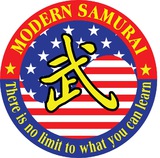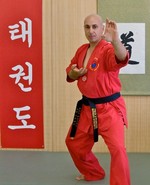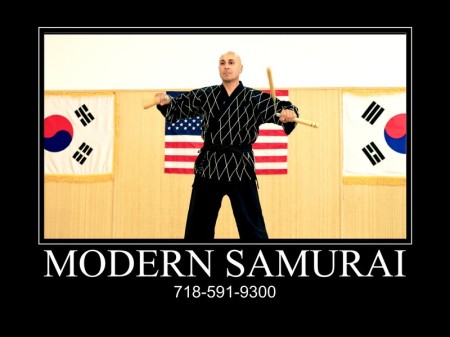Taekwondo
In contemporary times Taekwondo has been known for both its Olympic application and its sport association. While numerous benefits result from this perspective, there is a downside in that the skill set - while formidable - is not versatile. Once competition rules are introduced, other aspects of martial arts training are omitted making for a very narrowly focused martial sport and, worse, a practitioner who is actually handicapped in an emergency.
There will always be great fighters, regardless of style or discipline; however, under stress one will always employ what one has practiced. If kicking is the main focus, how does one negotiate an opponent whose primary art is punching or grappling?
Since most children and adults will not be engaged in physical combat, it makes sense to teach a wide variety of skills that inculcate practical solutions to common self-defense problems. For example, competition Taekwondo is primarily a distance art. Up to and until the moment of impact, clinching is utilized and occasionally close in kicking. Hand strikes, however, are all but extinct, and average practitioners who have not cross trained in other arts lack a defensive foundation upon which to build at close distances or in other scenarios that include punching, grappling and so on.
For parents of children enrolled at Modern Samurai, the various components instilled during training such as exercise, discipline, focus, attitude, confidence, respect and many other tenets underlying the martial arts are the most compelling reasons to belong to our facility. Additionally, many parents appreciate the discipline and consistency of study at Modern Samurai which reinforces and encourages academic improvement in the context of learning, understanding and practicing useful techniques of physical struggle.
Training methods must reflect real life scenarios of potential conflicts or attacks. It is simply not reasonable to expect anyone to emerge successful and unscathed in situations that have never been discussed, contemplated, practiced or learned. Self- defense instincts require cultivation and practice in the skills that enhance the ability to protect oneself or one's loved ones. This is our ultimate aim at Modern Samurai.
What is Taekwondo?
Taekwondo is Korean karate. Tae means to smash with the fist, Kwon to smash with the leg, or kick, and do, the way. Roughly translated, the way of punching and kicking. However this is a very simple definition. There must be more depth to our practice, and study than this, otherwise the exercise will denigrate and lose its value. At that point, it would merely be another sports activity, and, let's be honest, most children can already do that.
Do is also translated as the path, the way or road. It is important that we understand that taekwondo is a way of doing things in every avenue of life. The overarching goal is to lead the individual to strive to improve each day in every way possible, to be positive, show a positive outlook, to help others, and to lead by example.
During the last century, do has become the suffix, attached to many martial art styles. Karate-Do, Kyudo (way of archery, Japanese) Judo , Taekwondo.
Do is a life time goal that can never be ultimately realized, as the ultimate would be perfection, which is impossible, However, the power of positive thinking cannot be underestimated nor undervalued. The best part of do and the way is just that, the road to self-discovery and self-mastery. This path and the choice to improve oneself throughout their life is very spiritual, but in no way conflicts with any religious teachings and rules.
In fact, I have been told by parents over the years, how well, our approach in teaching and imparting knowledge strengthens and integrates their beliefs. The do way, or path is a journey, a martial art's journey. Where it takes you, is not as important as how you get there. The teacher's role is key, but only the individual, can ultimately decide where he or she will go.




